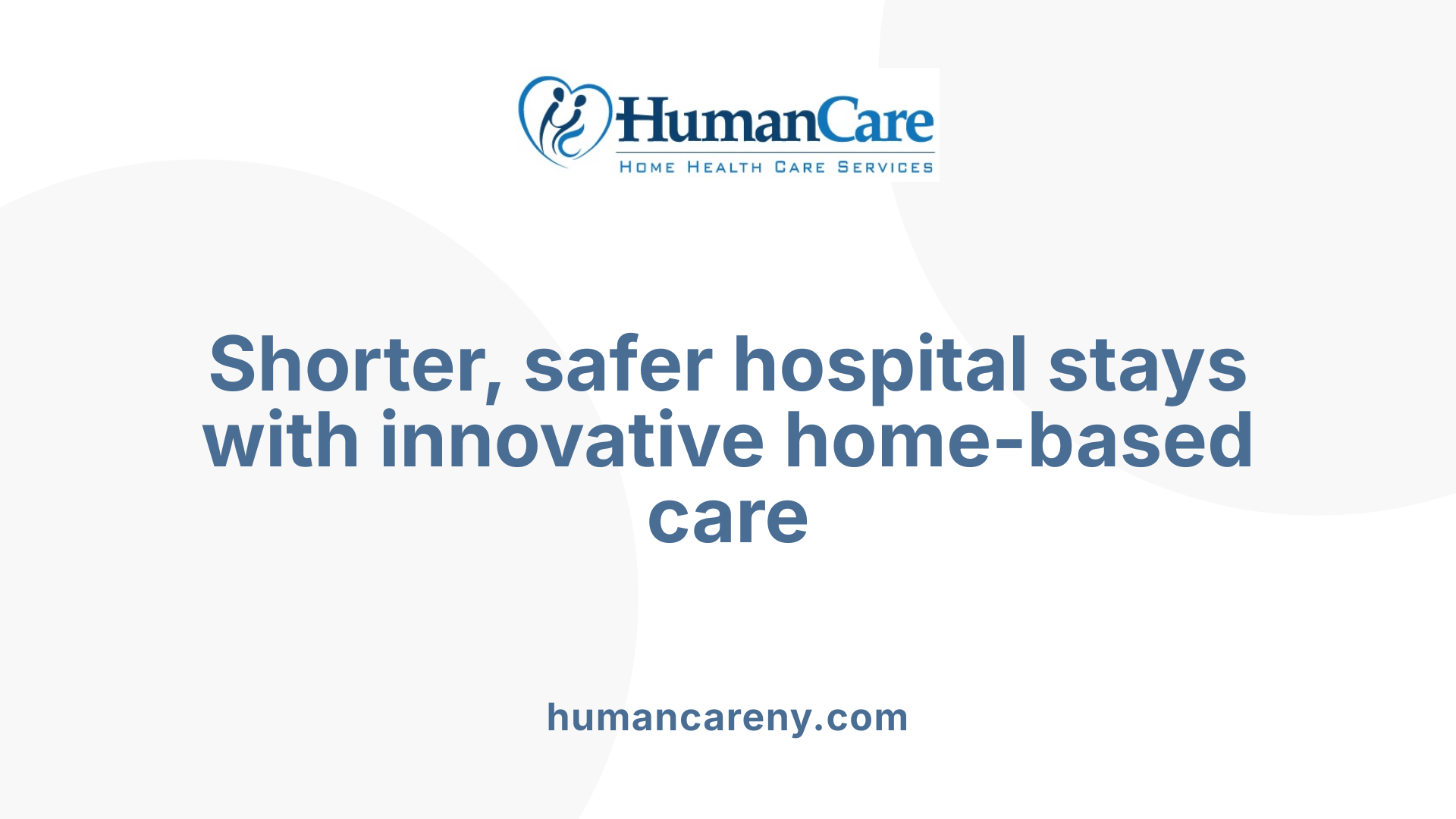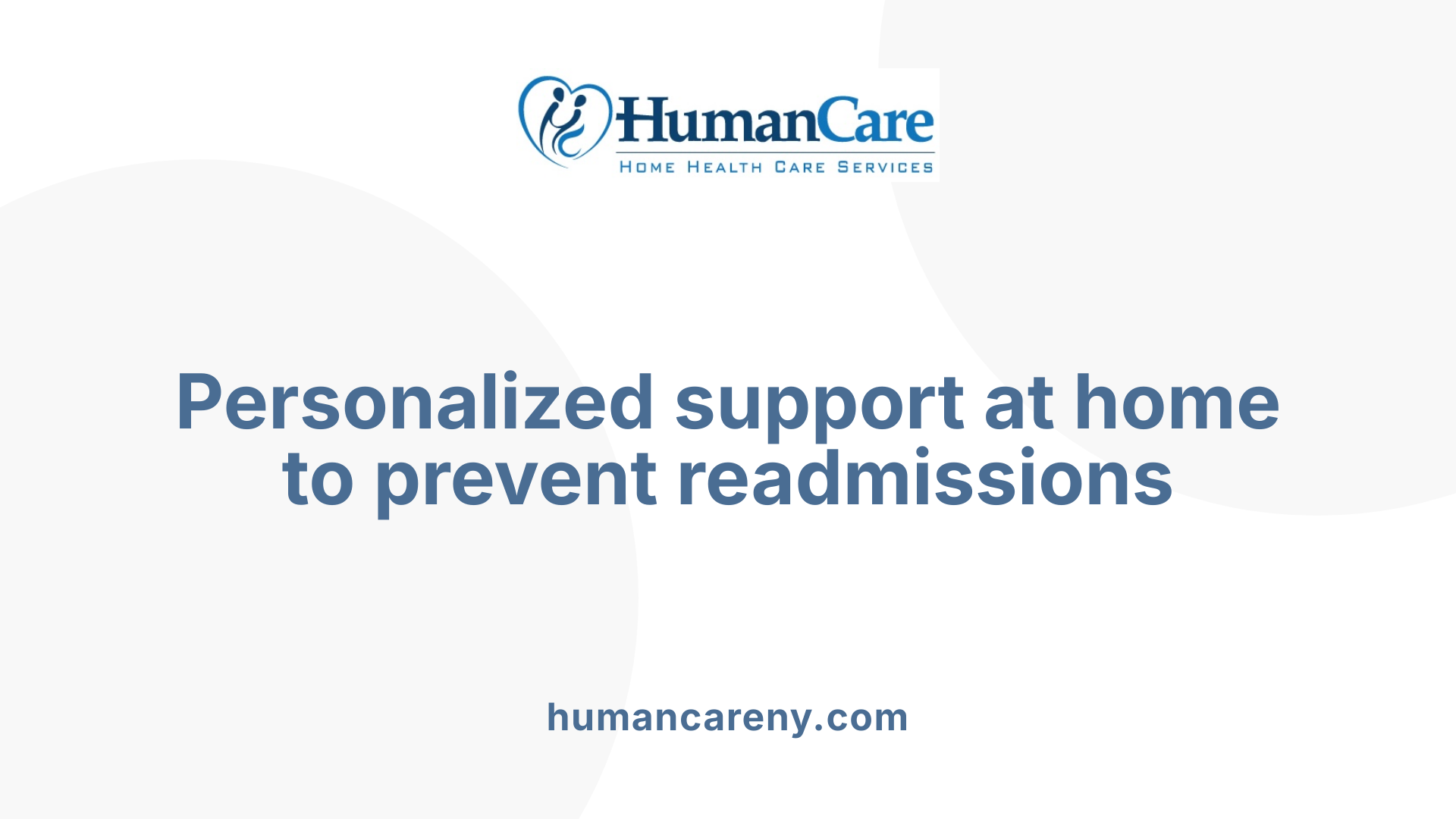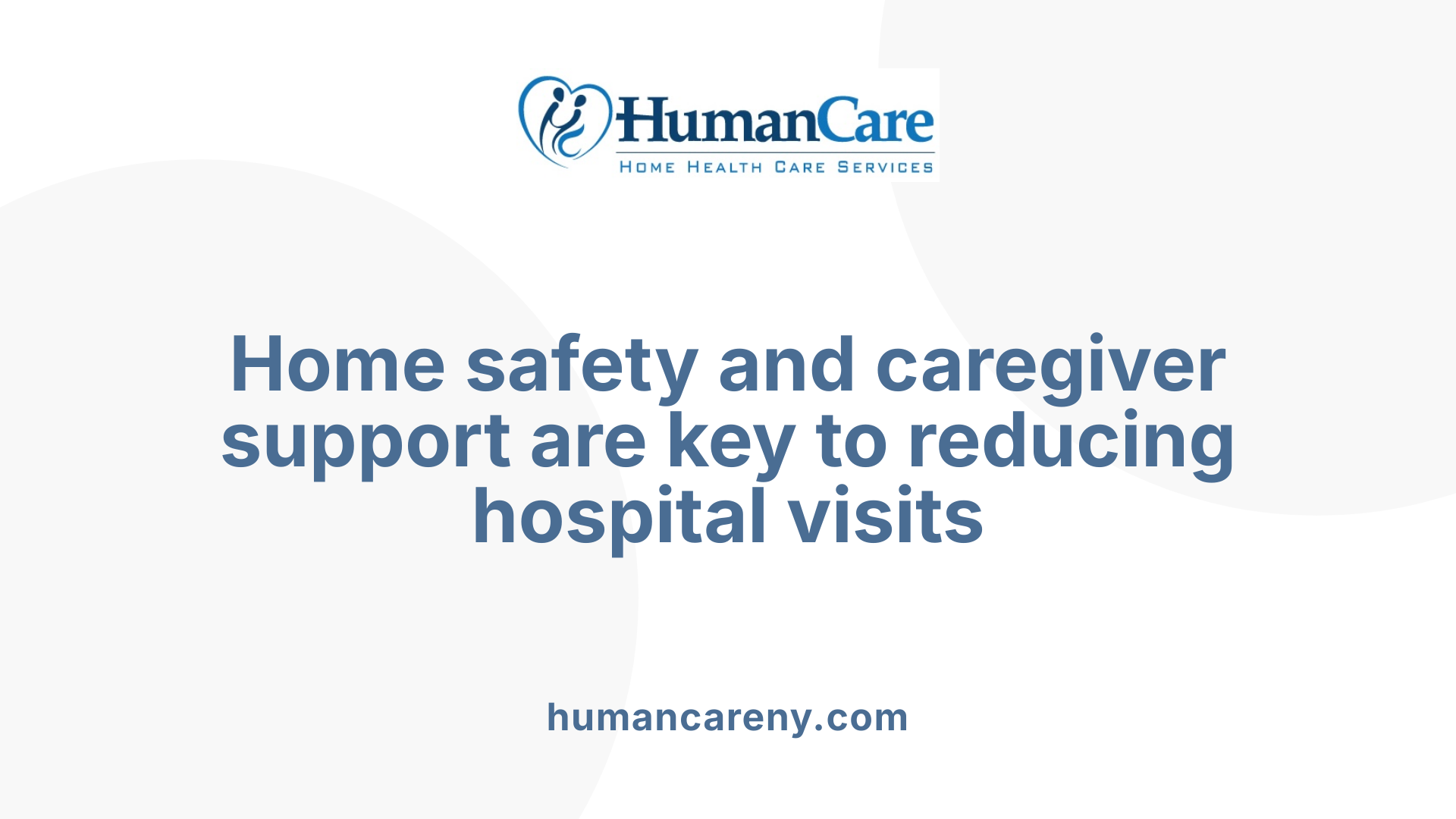Understanding the Impact of Homemaking and In-Home Interventions on Elderly Health
Hospital readmissions among elderly patients remain a significant concern, contributing to increased health risks and healthcare costs. Effective homemaking care and comprehensive in-home health interventions can serve as powerful strategies to minimize these readmissions. By addressing medical, environmental, and psychosocial needs within familiar settings, caregivers and health providers can greatly improve recovery outcomes for seniors post-discharge.
Factors Contributing to Preventable Hospital Readmissions in the Elderly
Preventable hospital readmissions among elderly patients often stem from multiple interconnected factors that can be addressed through improved healthcare practices.
One significant issue involves emergency department decision-making. High-risk decision processes, such as premature discharge or inadequate assessment of patient stability, can lead to readmissions that might have been avoidable with more cautious evaluation.
Communication gaps also play a critical role. Failure to effectively relay vital medical and discharge information to patients and outpatient providers hampers continuity of care. When care plans, medication instructions, or warning signs are not clearly communicated, patients may unintentionally neglect important health guidelines.
Another contributing factor is insufficient support for self-management post-discharge. Elderly patients often require guidance on managing medications, recognizing symptoms, and adjusting activities. Lack of education and follow-up support increases the risk of complications and subsequent hospital visits.
Moreover, there is frequently a lack of meaningful discussions about care goals and patient engagement. When patients are not involved in decision-making or do not understand their care objectives, adherence diminishes, raising the likelihood of avoidable admissions.
Interventions aimed at enhancing communication, ensuring accurate discharge timing, and fostering active patient participation have shown promise in reducing these preventable readmissions. Emphasizing comprehensive discharge planning, effective handoffs, and personalized education can significantly improve outcomes.
Ultimately, focusing on these areas during hospitalization and at the transition to home can dramatically decrease avoidable readmissions among seniors, improving their health and reducing strain on healthcare systems.
| Contributing Factors | Description | Potential Solutions |
|---|---|---|
| High-risk decision making | Premature or unsafe discharges due to urgency or oversight | Implement thorough assessments before discharge |
| Communication gaps | Lack of clear info transfer to patients and providers | Use standardized discharge protocols and follow-up calls |
| Poor self-management support | Insufficient education and resources post-discharge | Provide tailored education, home follow-up, and coaching |
| Lack of patient engagement | Limited involvement in care planning | Foster shared decision-making and goal-setting |
Understanding and addressing these elements are essential steps toward reducing preventable readmissions in the elderly population.
The Effectiveness of Home Care and Home Health Services in Reducing Readmissions
Does home care reduce hospital readmissions for the elderly?
Studies consistently indicate that home care programs can significantly lower the rates of hospital readmissions among older adults. Research shows that elderly patients who receive structured home health services are less likely to be readmitted within 30 days of discharge. These interventions not only decrease the likelihood of unnecessary hospital stays but also have been shown to shorten the length of hospital stays when combined with appropriate follow-up.
What are the benefits of home health care in reducing hospital readmissions for the elderly?
Home health care offers a range of benefits aimed at maintaining health stability and preventing future hospitalizations. This approach provides personalized, comprehensive care tailored to the unique needs of each patient. Skilled nursing, medication management, physical therapy, and health monitoring are each critical components that support recovery at home.
By addressing risks such as falls and wandering, especially for seniors with cognitive impairments like dementia, home health minimizes hazards that often lead to hospital visits. Supporting daily activities and emotional well-being helps maintain independence and improves quality of life. Coming from a familiar environment, close to family and friends, reduces anxiety and aids emotional recovery.
Economically, home health services are often more cost-effective than inpatient care or residential facilities, helping reduce healthcare expenditures overall. Incorporating modern technologies like remote monitoring and real-time alerts allows healthcare providers to detect early warning signs and adjust care plans promptly. This adaptability further enhances its capacity to prevent readmissions and promotes continuous health management.
In summary, home health care combines personalized, safe, and flexible support, playing a vital role in reducing hospital readmissions among elderly populations and fostering healthier aging in place.
Hospital at Home Programs: A Transformative Approach

What is the Hospital at Home program?
The Hospital at Home initiative brings hospital-level care directly into a patient's home, offering a full substitute for traditional inpatient hospital services for specific conditions common among seniors. This innovative model involves comprehensive medical assessments, diagnostics, treatments, and daily physician and nurse visits—all carried out in the comfort of the patient’s home.
What are the benefits of the Hospital at Home program for elderly patients?
Research consistently shows that Hospital at Home programs offer significant advantages for older adults. Patients treated through this model experience shorter hospital stays, lower healthcare costs, and reduced rates of readmission and complications compared to conventional inpatient care.
In addition, studies report higher satisfaction among patients and their families, who appreciate the familiar environment and personalized attention. The approach effectively tackles common issues linked to traditional hospitalization, such as infections, delirium, and functional decline, thereby supporting better recovery outcomes.
Core components of the program
The model includes critical services like daily visits from healthcare professionals, diagnostic testing, and treatment administration at home. These components ensure continuous, high-quality care while minimizing the risks associated with hospital stays.
Addressing risks of traditional hospitalizations
Hospitals pose risks for elderly patients, including increased chances of infections, disorientation, and decline in physical function. Hospital at Home mitigates these concerns by providing medical care in a familiar setting, promoting safety and comfort while reducing exposure to hospital-acquired complications.
Patient eligibility and program implementation
Eligibility assessments are performed to identify suitable candidates who can safely receive acute care at home. Once selected, patients undergo initial evaluations followed by ongoing management, integrating care seamlessly with their primary healthcare providers.
Support and adoption
Since its inception in 2001, the Hospital at Home model has been embraced across the US and Canada. Supported by the Centers for Medicare & Medicaid Services (CMS) through the Acute Hospital Care At Home program, many hospitals and health systems now incorporate this approach, highlighting its demonstrated benefits and scalability.
In-Home Medical and Support Services for Elderly Patients

What strategies are effective in reducing unnecessary hospital readmissions for elderly patients?
Reducing unplanned hospital readmissions among seniors involves several effective strategies. One key approach is implementing comprehensive follow-up programs. For example, nurse-led initiatives that include proactive phone calls within the first 72 hours after discharge can quickly identify early signs of complications, enabling timely intervention.
Another successful tactic is the use of healthcare call centers. These can be inbound, outbound, or a hybrid system that enhances communication with elderly patients. Regular contact helps address concerns, clarify discharge instructions, and reinforce medication adherence, all of which reduce the risk of returning to the hospital.
Technology also plays a vital role. Telemedicine consultations, automated reminder systems, and electronic health records facilitate remote monitoring and personalized care. These tools allow healthcare providers to track patients' health status, spot early warning signs, and coordinate care efficiently.
Patient education is equally important. Teaching seniors to recognize red flags like worsening symptoms or adverse drug reactions empowers them to seek help promptly and avoid complications that could lead to hospitalization.
Overall, combining follow-up programs, advanced communication channels, digital health tools, and patient education forms a robust framework. These integrated efforts enhance engagement, support self-management, and significantly decrease avoidable hospital readmissions in elderly populations.
The Role of Caregivers and Home Safety in Preventing Readmissions

How can homemaking and in-home care contribute to preventing elderly hospital readmission?
Proper homemaking and in-home care play a crucial role in preventing unnecessary hospital readmissions for elderly patients. These services create a safe and supportive environment, addressing potential hazards that could lead to falls or injuries. Regular home safety assessments help identify risks such as loose rugs or poor lighting, and caregivers can install safety devices like grab bars and railings.
Support with daily activities, including meal preparation and medication reminders, ensures that seniors adhere to their treatment plans. This decreases the likelihood of medication errors and nutritional deficiencies, which can cause health complications.
Assistance with follow-up appointments and transportation ensures that patients attend necessary medical evaluations and maintain ongoing healthcare oversight. Caregivers also provide emotional and social support, helping reduce feelings of loneliness or depression that might hinder recovery.
Creating a familiar and organized environment fosters independence while enabling caregivers to monitor health signs closely. Supporting nutritional needs and hydration helps reduce inflammation and improve overall health. Home modifications such as hazard removal not only prevent falls but also contribute to a sense of security.
Overall, attentive homemaking, combined with strategic home safety measures, supports elderly patients’ recovery, minimizes complications, and significantly lowers the risks of rehospitalization.
Technological Advances and Community Support in Elderly Care

How do these mechanisms support the goal of reducing elderly hospital readmissions?
Remote patient monitoring, fall detection devices, and telehealth services play a crucial role in safeguarding older adults at home. These technologies enable healthcare providers and caregivers to assess vital signs, detect falls automatically, and conduct virtual consultations in real-time. Early detection of health changes allows for prompt interventions, often preventing the need for hospital visits.
Community-based programs and caregiver education further strengthen support systems. Education initiatives teach caregivers and families how to recognize early signs of deteriorating health, ensuring timely action. Support groups provide emotional comfort and practical advice, reducing feelings of isolation and promoting adherence to care routines.
Integrating advanced technology with homemaking services creates a comprehensive framework for continuous health management. For example, wearable devices and home sensors seamlessly communicate with healthcare teams, allowing routine adjustments and early alerts.
This combined approach enhances early detection, swift response, and ongoing recovery efforts. Consequently, hospital readmission rates decline as risks are managed proactively. Community engagement also encourages social interaction, reducing loneliness and mental health issues that can exacerbate physical health problems. It fosters healthier aging in place, ultimately leading to better health outcomes and a reduction in unnecessary hospital stays.
Moving Forward with Effective Homemaking and In-Home Care Strategies
In conclusion, the integration of targeted homemaking practices, comprehensive home health services, innovative hospital-at-home models, and advanced monitoring technologies forms a powerful foundation to prevent hospital readmissions among the elderly. By focusing on personalized care, safety, timely interventions, and continuous support, caregivers and healthcare providers can significantly improve recovery outcomes, promote independence, and enhance the quality of life for seniors. As healthcare systems continue to evolve, embracing these strategies will be essential in creating a sustainable and patient-centered approach to elderly care.
References
- Interventions to reduce hospital readmissions in the elderly - NCBI
- Hospital at Home Care Reduces Costs, Readmissions, and ...
- Three Ways Home Care Can Help Older Adults Avoid Hospital ...
- Reducing Hospital Readmissions with Home Health Care - Amedisys
- Effect of Home Care Program on Re-hospitalization in Advanced ...
- How Home Health Care Reduces Hospital Readmission
- How to Reduce Hospital Readmissions & Keep Seniors at Home
- The Role of In-Home Care in Preventing Hospital Readmissions
- How Home Care Agencies Can Help Reduce Readmission Rates



